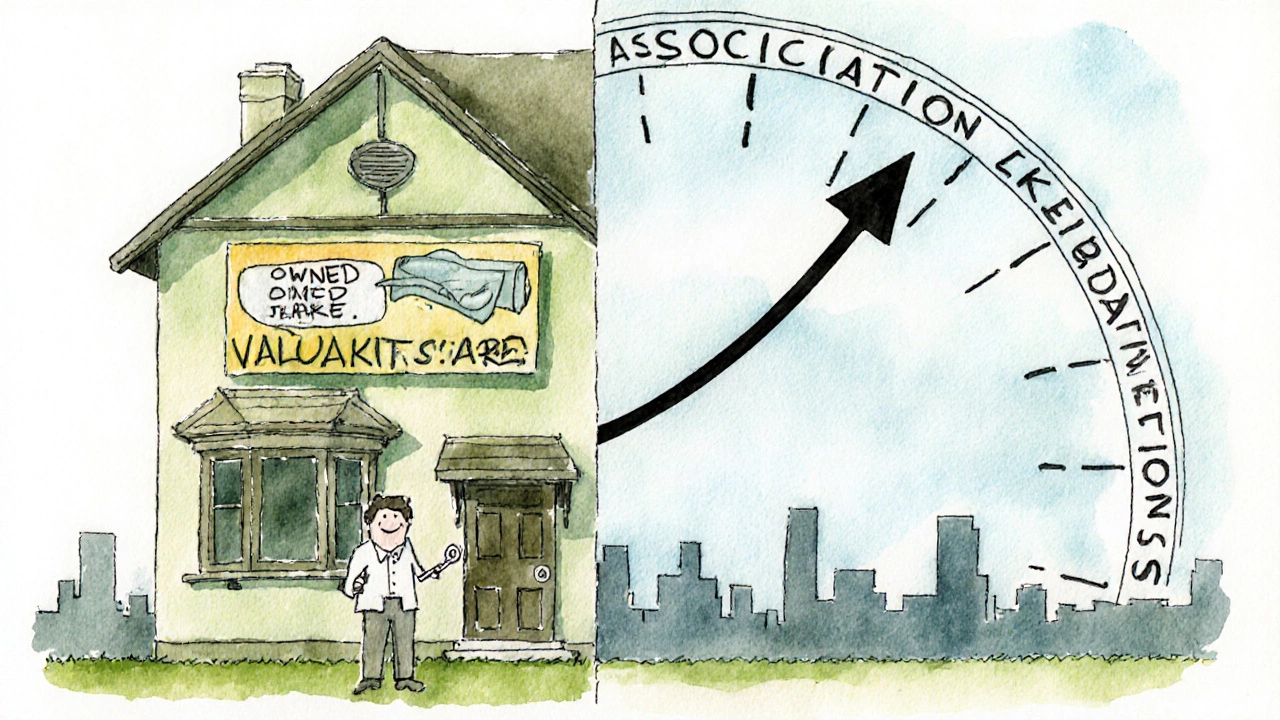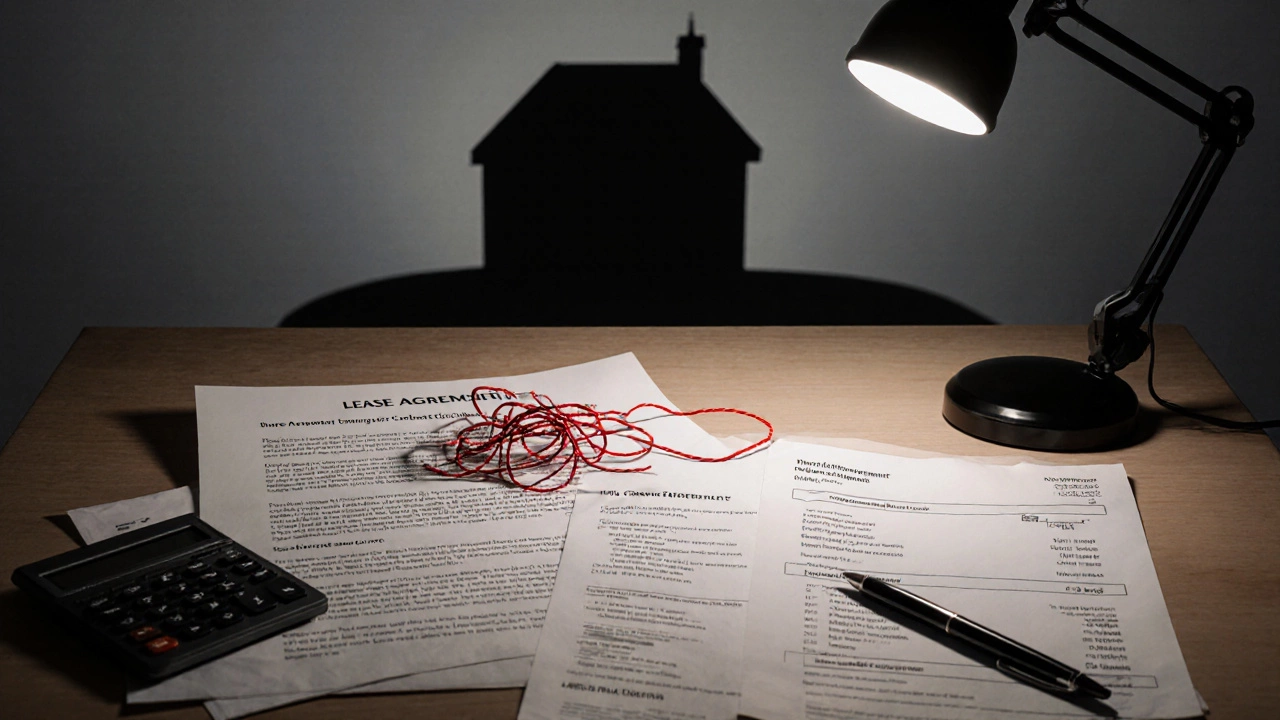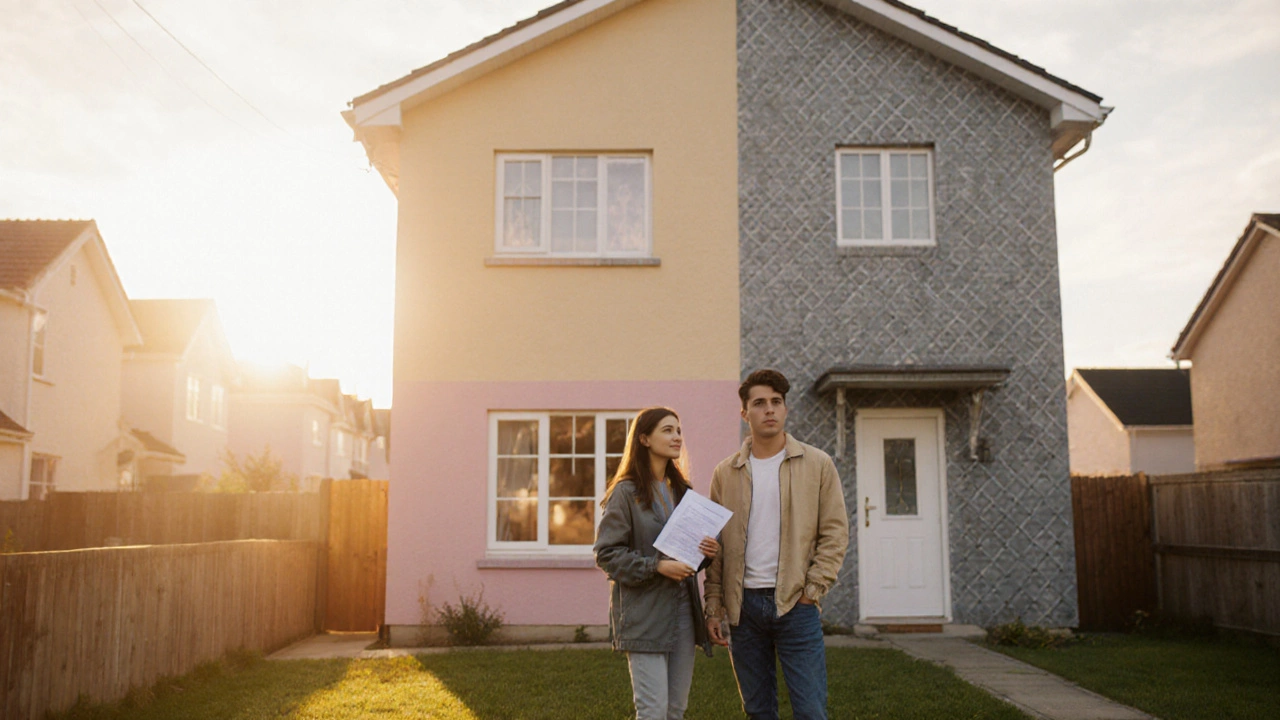Shared Ownership Cost Calculator
Compare your shared ownership costs against full ownership. Enter your property details to see the financial differences.
Your Shared Ownership Details
Comparison Results
Thinking about buying a home but the price tag feels out of reach? Shared Ownership is a popular route that lets you purchase a slice of a property while renting the rest. It sounds like a win‑win, right? Yet every shortcut comes with its own set of snags. Below we unpack the three biggest drawbacks that often catch first‑time buyers off guard, and we’ll show you how they stack up against outright buying or renting.
Quick Takeaways
- Resale value is tied to the market‑price of the unsold share, limiting profit potential.
- Ongoing rent and service‑charge bills can erode the affordability advantage.
- Complex equity‑share and mortgage structures add paperwork, fees, and future uncertainty.
What Exactly Is Shared Ownership?
In a Shared Ownership scheme, you buy between 25 % and 75 % of a home (the “share”) and pay rent on the remaining portion, which stays under the control of a housing association or similar body. Over time you can buy more of the share - a process called “staircasing”. The idea is to lower the mortgage needed, making the entry point cheaper than buying 100 % outright.
Key players in this setup include the Housing Association that owns the unsold share, the Equity Share you purchase, and the Mortgage you take out on your portion. While the model can open doors for many, the drawbacks often surface when you start thinking about the future.
Disadvantage #1 - Limited Resale Value and Market Flexibility
When you own only part of a property, you’re essentially tethered to the housing association’s pricing rules. If the local market booms, the price you pay to buy extra share or to sell your existing share is calculated on the association’s valuation, which may lag behind true market rates. As a result, you might miss out on the capital gains that full owners enjoy.
Imagine you bought a 50 % share for NZ$200,000 in a suburb that later sees a 30 % price surge. Full‑ownership buyers could ride that increase, but your share’s value is capped by the association’s appraisal. When you finally decide to sell, you’ll often have to list the entire property (your share plus the unsold portion) on the market, and the buyer must be comfortable with the shared‑ownership model. That narrows the pool of potential buyers, extending the time it takes to sell.
In practice, many owners report having to accept a lower price than they’d hoped, especially if the housing association imposes a “fair market rent” on the unsold portion, which can be lower than the prevailing market rent. The net effect? A slower, less profitable exit strategy.

Disadvantage #2 - Ongoing Rent and Service‑Charge Bills
Even though you own a slice of the home, you’re still paying rent on the rest. That rent is usually calculated as a percentage of the value of the unsold share and is indexed to inflation or market rates. Add to that the Service Charge that covers communal upkeep, insurance, and ground‑rent. These recurring costs can add up quickly and sometimes outweigh the savings you thought you were getting on mortgage payments.
Take a typical scenario: you own 40 % of a NZ$500,000 house. Your mortgage on that share might be NZ$150,000, with a monthly payment of NZ$800. The rent on the remaining 60 % could be around NZ$500 per month, and service charges might add another NZ$150. Suddenly, your monthly outlay is NZ$1,450 - not a huge drop from a full mortgage on the entire property, especially once you factor in the initial deposit you still had to put down.
These extra layers of payment mean that budgeting becomes more complex. If you miss a rent payment, you risk breaching your agreement with the housing association, which could lead to penalties or even jeopardize your ownership stake.
Disadvantage #3 - Complex Equity‑Share and Mortgage Arrangements
The paperwork for shared ownership is thicker than a typical home‑loan contract. You’ll sign a lease for the rented portion, a share purchase agreement for the equity you own, and a separate mortgage agreement for that equity. Each document carries its own set of terms, fees, and conditions.
One hidden cost is the shared ownership disadvantages stamp duty on the purchase of the share, which can be a sizable chunk of the transaction. Then there are staircasing fees - every time you buy an additional share, the housing association may charge a valuation fee, legal fees, and sometimes a “release fee” for reducing their ownership stake.
Moreover, lenders often view shared‑ownership mortgages as higher‑risk, which can lead to stricter credit requirements or higher interest rates. If you decide to refinance later, you might find fewer mortgage products willing to accommodate a partial‑ownership loan.
All of these complications can make the path to full ownership longer and more expensive than you initially imagined.

How These Disadvantages Stack Up Against Other Options
| Aspect | Shared Ownership | Full Ownership | Renting |
|---|---|---|---|
| Initial Deposit | Usually 5‑10 % of share price | Typically 10‑20 % of full price | None |
| Monthly Cost | Mortgage + rent + service charge | Mortgage only (plus utilities) | Rent only (plus utilities) |
| Resale Profit Potential | Limited by housing‑association valuation | Full market upside | None |
| Flexibility to Move | Staircasing & lease terms can delay sale | Full control, sell anytime | Easy to relocate (notice period) |
| Complexity of Agreements | Multiple contracts (lease, share, mortgage) | Single mortgage contract | Single tenancy agreement |
Scanning the table makes it clear: shared ownership can shave off a chunk of the upfront cash, but you pay for that convenience with extra monthly bills and a tangled web of contracts. If you value long‑term capital growth and the freedom to sell whenever, full ownership still beats the shared route.
Mitigating the Drawbacks - When Shared Ownership Still Makes Sense
If you’re a first‑time buyer stuck in a high‑price market, shared ownership might be the only realistic way to step onto the property ladder. Here are a few strategies to soften the sting:
- Plan Your Staircasing Early: Set a timeline to buy additional shares when your income rises, so you gradually reduce rent and service charges.
- Shop Around for Mortgage Deals: Some lenders specialise in shared‑ownership loans and can offer lower rates than general mortgages.
- Negotiate Service‑Charge Caps: Before signing, ask the housing association if they can limit annual increases.
- Check Future Development Plans: Areas slated for new infrastructure often see faster price growth, which can boost the value of your share.
By treating shared ownership as a stepping‑stone rather than a final destination, you can leverage its lower entry cost while keeping an eye on the exit strategy.
Can I rent out my shared‑ownership property?
Usually not. Most housing associations prohibit sub‑letting without written permission, and even then they may impose additional fees. It’s best to check the lease agreement before considering renting it out.
What happens to the rent if property values rise?
Rent on the unsold share is often tied to the market value of that share. If the overall property price climbs, the rent can increase, although many schemes cap rent adjustments to inflation or a set percentage.
Is staircasing mandatory?
No, you can keep the same share forever, but you’ll continue paying rent on the rest. Staircasing is optional and usually done when you can afford a larger mortgage portion.
Do I need a separate mortgage for the rented portion?
No. The rent you pay to the housing association is a tenancy expense, not a loan. Only the equity share you purchase requires a mortgage.
Can I sell my share without the housing association’s approval?
You’ll need the association’s consent because they own the remaining share. They usually have a right of first refusal, meaning they can buy your portion before you offer it to an external buyer.
Understanding these nuances helps you avoid nasty surprises down the road. Shared ownership isn’t a magic ticket, but with the right expectations and a solid plan, it can still be a viable path to homeownership.


Corbin Fairweather
I am an expert in real estate focusing on property sales and rentals. I enjoy writing about the latest trends in the real estate market and sharing insights on how to make successful property investments. My passion lies in helping clients find their dream homes and navigating the complexities of real estate transactions. In my free time, I enjoy hiking and capturing the beauty of landscapes through photography.
view all postsWrite a comment